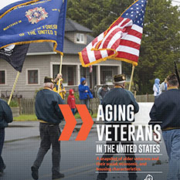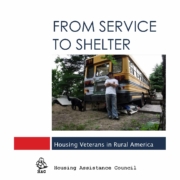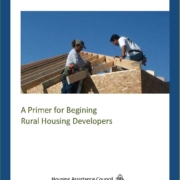Aging Veterans in the United States
A snapshot of older veterans and their social, economic, and housing characteristics.
To better understand and inform strategies and policies for America’s aging veterans, the Housing Assistance Council has published Aging Veterans in the United States an analysis of data describing the older veteran population.
The United States is on the cusp of an extensive and far-reaching demographic transformation as the senior population is expected to nearly double by 2050. This is similarly the case for the veteran segment of the population who make up about 9 percent of the U.S. population. A large and growing proportion of this veteran population is composed of those age 55 and over, “older” Americans. As this group grows older, it is important to consider their unique characteristics and issues, which include health problems and physical limitations associated with aging. A rapidly aging population will significantly impact nearly all aspects of the nation’s social, economic, and housing systems.


 Housing Assistance Council
Housing Assistance Council